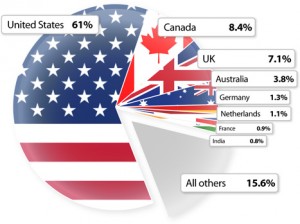Developing Behavioral and Demographic Lead Scoring (Part 2)
 In a recent blog titled Developing Behavioral and Demographic Lead Scoring (Part 1) we talked about using behaviors to help score/qualify leads. In this blog post we’ll look at the other contributing factor to lead qualification, demographic lead scoring.
In a recent blog titled Developing Behavioral and Demographic Lead Scoring (Part 1) we talked about using behaviors to help score/qualify leads. In this blog post we’ll look at the other contributing factor to lead qualification, demographic lead scoring.
Demographic Lead Scoring
A demographic lead score is used to identify if a lead has the same characteristics as a typical customer. Using data collected in registration forms and surveys, it compares the leads likelihood to purchase against pre-determined criteria that defines the company’s existing customer base.
The following are common examples of demographic-based lead scoring:
- Company name
- Annual revenue of the visitor’s company
- Industry of the visitor’s company
- Address, city, and state or business
- Available budget for your product or service
- First name and last name of potential buyer
- Address, city, and state
- Job title
- Purchasing authority
- Years of experience with the company
It makes sense that not everyone or every business has the need and the budget to purchase a particular product or service. Leads could be displaying behavioral characteristics for a variety of reasons that won’t necessary result in a sale. For example, a student could be researching a product or service for a school assignment. They may download numerous reports and heavily frequent a good resource website, but that doesn’t mean they have any chance of being converted into a customer.
Combining a lead’s behavioral and demographic information gives the marketing department a clear picture of each individual lead’s attributes, as well as the potential of them becoming a sale. Once a lead can be accurately depicted, marketing can then prioritize which leads are ready to be passed on to the sales team, which leads are not worth pursuing, and which leads need further nurturing.
An alternative approach to demographic lead scoring is lead grading, also supported by Lead Liaison. Instead of a point system Lead Grading uses a letter/grade system from A through F based on how well the prospect fits your company’s ideal buyer persona.


